Chatbots have become essential tools that enhance customer interactions, operational efficiency, and user satisfaction across various industries. A recent survey found that 60% of U.S. consumers appreciate chatbots for their constant availability and time-saving abilities, while 45% value their immediate responses.1 To maximize their benefits, businesses need clarity on the most impactful chatbot applications available in 2025.
We explored 40 chatbot applications with real-life examples across various industries, demonstrating how AI-driven chatbots empower organizations.
Reactive and proactive chatbots
Reactive chatbots wait for users to make the first move. Think of customer support interactions or product suggestions that appear after you’ve shown interest.
Proactive chatbots reach out without being prompted. These might remind you about software updates or notify you about sales and promotions.
| Category | Active (Reactive) Chatbots | Proactive (Inactive) Chatbots |
|---|---|---|
| Customer Support | FAQ bots that respond to common customer queries | Bots that reach out to users for troubleshooting |
| Sales & Marketing | Chatbots that respond to inquiries about products or services | Shopping bots that recommend products based on browsing |
| Healthcare & Well-being | Symptom checkers that respond to user inputs | Bots that remind users to take medications or schedule check-ups |
| E-commerce | Order tracking bots that provide updates on delivery | Bots that notify users about restocks, flash sales, or personalized offers |
| Travel & Hospitality | Booking confirmation and inquiry bots and reservation confirmation bots | Bots that provide weather updates, flight status, and local activity suggestions based on context |
| Financial Services | Bots that respond to account-related queries and transaction-related bots | Bots for unusual spending, upcoming bills and investment advisory |
| Entertainment & Media | News delivery bots that provide updates on current events | Bots that alerts users about current events |
| Human Resources | Recruiting bots that respond to applicant queries | Bots that set up training schedules, and guide through HR processes |
| Productivity & Scheduling | Task management bots that respond to user queries and Email follow-up bots | Automated scheduling bots that suggest meeting times and track project progress. |
Customer support
Customer support chatbots work well in virtually any industry where you need to keep clients informed and connected.
1. Handling Queries and Complaints
Today’s AI chatbots tackle customer questions and complaints with immediate responses. They troubleshoot common issues and know when to bring in human agents for trickier problems.
Companies can spot recurring issues by analyzing customer feedback, which helps improve support and enhance products. Chatbots also sort complaints by urgency, ensuring critical matters get immediate attention while helping businesses refine their offerings based on customer insights.
Example: Amazon’s support chatbot resolves product questions quickly, handling millions of interactions every day. These bots also gather feedback about both the product and the chatbot experience itself.2
2. Customer inquiry handling
AI chatbots transform how businesses handle customer questions by providing instant, accurate answers about products, pricing, and troubleshooting. They use natural language processing to understand what customers are asking and deliver relevant solutions, cutting wait times and boosting satisfaction.
Example: Domino’s Pizza lets customers order, track deliveries, and solve common questions instantly through their chatbot, making customers happier while reducing service costs.3
3. Provide simple information services
Chatbots excel at sharing simple information like contact details, order updates, business hours, and FAQs.
By offering quick, accurate responses, chatbots make things easier for customers and reduce the burden on support teams. They boost productivity by automating repetitive tasks, letting companies focus on more complex customer needs.
Example: IKEA’s chatbot tells customers about store locations, opening times, and product availability, dramatically cutting wait times.4
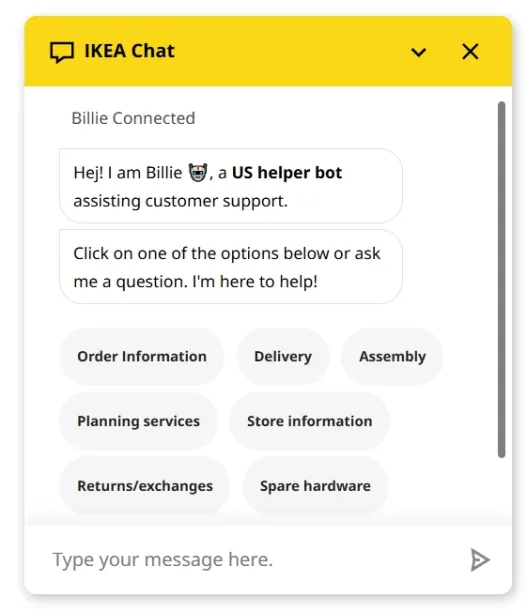
Figure 1. IKEA’s Chatbot.
4. Supporting human agents
AI chatbots help customer service reps by answering basic questions, gathering relevant customer information, and suggesting responses. This lets staff focus on more challenging issues while the chatbot handles routine inquiries. By streamlining workflows and automating repetitive tasks, chatbots make customer service teams more effective overall.
Example: Allstate developed Allstate Business Insurance expert(ABIe) to handle questions from 12K agents. Agents inquire about policy details and sales quotes from ABIe.5
5. Billing notifications
AI chatbots play a crucial role in billing by automatically sending updates and reminders about invoices, payment deadlines, and outstanding balances. They also help customers resolve billing issues by providing easy access to account information and solutions for common payment problems.
Example: AT&T’s chatbot proactively sends timely billing alerts and reminders, significantly reducing late payments and billing disputes.6
Sales & marketing
6. Suggest products
Chatbots can offer personalized suggestions based on search history, browsing patterns, and past purchases. They enhance product discovery by asking tailored questions to people who show interest but hesitate to buy. This conversational approach boosts conversion rates and improves shopping experiences by guiding customers to the right products.
Example: Spotify’s chatbot suggests personalized playlists, significantly boosting user engagement and retention.7
7. Offer discounts
When a customer is hunting for a better deal, AI chatbots can improve their experience by offering appropriate discounts. By looking at past interactions and purchase history, the chatbot determines if the customer qualifies for a special offer.
This targeted approach increases conversion likelihood and builds customer loyalty by encouraging repeat business.
Example: Sephora’s chatbot analyzes customer behavior to offer promotions, increasing repeat purchases and customer loyalty.8
8. Prevent churn
Keeping existing customers is easier and cheaper than finding new ones, making churn prediction essential for subscription businesses. AI chatbots can spot warning signs of potential churn by analyzing customer behavior patterns.
Through personalized conversations, chatbots address concerns, offer tailored incentives, and make retention-focused offers, ultimately reducing dropoffs and building lasting customer relationships.
Example: Netflix’s chatbot identifies users at risk of churn and proactively offers tailored content recommendations to retain subscribers.9
Qualifying leads
9. Automotive
Car dealerships rely heavily on online leads, making conversion optimization crucial. AI chatbots engage potential customers and improve lead qualification by providing sophisticated answers about car models, financing options, and features.
By giving prospects quick, accurate information and helping them make decisions, chatbots significantly boost conversion rates and improve sales outcomes for automotive businesses.
Example: Toyota’s chatbot engages potential car buyers by answering queries, scheduling test drives, and providing financing details, improving lead conversion rates.10
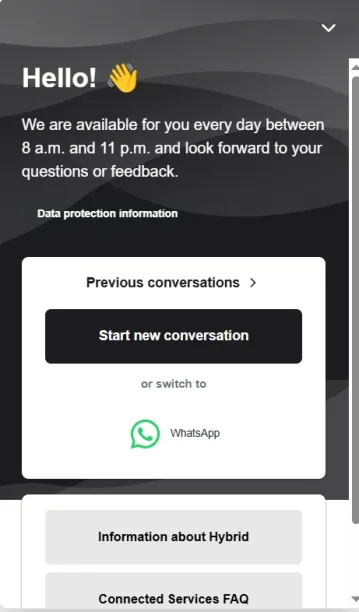
Figure 2. Toyota’s chatbot
10. Education
Academic resources and textbook content in chatbot training deliver accurate, citation-backed responses that guide students in their research.
Example: CustomGPTs focused on education can be designed to assist students with academic resources.
11. Real estate
Lead qualification takes considerable time in real estate agencies that depend on personal connections. AI chatbots like Apartment Ocean engage potential clients by assessing their interest levels, helping human agents prioritize leads more efficiently.
Example: Zillow’s chatbot prequalifies leads, schedules property viewings, and manages communications, greatly improving agent productivity.11
12. Product-related reminders
Chatbots send timely reminders about products, including replenishment alerts, upcoming specials, and subscription renewals to keep customers engaged. They analyze preferences and past purchases to deliver personalized notifications that drive repeat business. This proactive approach improves customer retention and ensures people don’t miss out on items they care about.
Example: Chewy’s chatbot sends pet owners personalized reminders for pet food and medication replenishment, improving customer convenience and ensuring timely repeat purchases.12
13. Re-engagement offers
Let’s face it—some customers leave and never come back. AI chatbots can re-engage inactive clients with personalized activation offers like discounts or special deals. By analyzing user behavior and delivering tailored offers at the right moment, chatbots increase the chances of winning back business. Beyond boosting retention, this strategy helps rebuild customer loyalty and drive conversions.
Example: Uber Eats’ chatbot identifies inactive users and re-engages them with customized activation offers, boosting user retention and repeat orders.13
Healthcare & well-being
14. Handling healthcare & insurance coverage-related inquiries
AI chatbots provide access to critical healthcare information by helping users understand their eligibility, coverage options, and benefits. In healthcare, chatbots improve patient satisfaction by automating these inquiries and reducing wait times.
Example: HealthJoy offers consumers fast, precise information to assist them in understanding the nuances of insurance coverage and healthcare.14
15. Diagnosis
AI chatbots serve as the first point of contact in diagnostic healthcare, using natural language processing to evaluate symptoms and offer preliminary assessments. Since COVID-19, awareness of infection risks has increased, making diagnostic bots essential for remote screenings that reduce unnecessary hospital visits.
These virtual assistants improve telemedicine by providing automated responses and directing users toward the right medical care.
Example: Ada Health’s chatbot conducts detailed symptom evaluations, guiding users with personalized medical advice and reducing the need for immediate healthcare visits.15
16. Mental health support
Conversational AI agents provide emotional support, helping users manage stress, anxiety, and depression through interactive communication. Therapy chatbots expand mental healthcare access by offering discreet and readily available assistance.
Example: Woebot assists with mental health, cognitive-behavioral therapy (CBT), mood tracking, and resources for emotional well-being through natural language processing (NLP).16
17. Health tracking
AI-powered chatbot apps deliver real-time insights by connecting with wearable technology. They encourage long-term wellness practices and improve proactive health management through automated responses and reminders.
Example: MyFitnessPal assists users in monitoring health and fitness-related data by tracking activity levels, diet, and medication schedules.17
E-commerce
18. Order goods
AI chatbots simplify shopping by letting consumers place orders directly through chat, eliminating the need to navigate websites. Using natural language processing and seamless e-commerce integration, chatbots handle payments, recommend products, and provide order updates.
This conversational approach streamlines online shopping across various channels and enhances the user experience..
Example: H&M’s chatbot enables customers to browse and purchase directly from chat, streamlining online shopping experiences.18
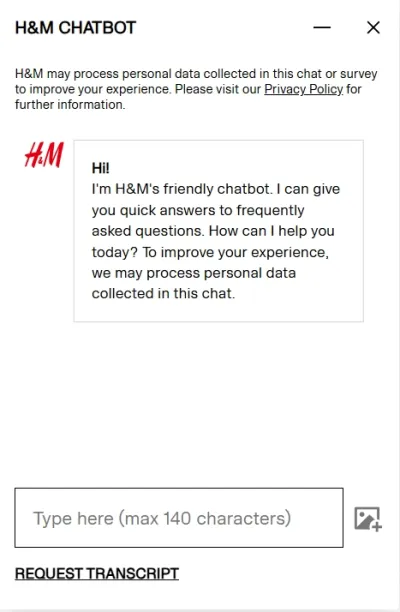
Figure 3. H&M’s chatbot
19. Set price alerts
Chatbots now track prices across different stores and let you know when something you want drops below your target price. Using real-time data collection, these bots make sure you never miss a good deal. It’s like having a friend who constantly watches prices for you.
Example: CamelCamelCamel’s chatbot alerts users of Amazon price fluctuations in real-time, enabling users to secure the best deals and maximize savings.19
20. Track orders
Chatbots have simplified order tracking through simple conversation interfaces. Instead of logging into websites or calling customer service, you can just ask a bot where your package is.
Example: Chatbots are integrated into e-commerce websites via platforms such as Tars, which allow users to check payment statuses, delivery progress, and expected arrival timeframes.20
21. Social shopping
Chatbots are changing how we shop on social media by connecting with platforms like Facebook Messenger and Instagram. They study what you like and suggest products that match your interests, answer your questions, and let you buy without leaving the app.
Example: Nike’s chatbot enables direct product sales through Facebook Messenger, boosting conversions from social media platforms.21
22. Subscription management
Chatbots make subscription management painless by letting you change plans, update payment info, or cancel services through simple conversations. No more navigating confusing website menus or waiting on hold with customer service.
Example: Netflix’s chatbot manages subscription changes smoothly, enhancing user convenience.22
Travel & hospitality
23. Streamlined travel planning
Travel chatbots take the headache out of trip planning by helping you book hotels and flights while keeping you updated about any schedule changes. They handle problems like cancellations and delays, making your journey smoother from start to finish.
Example: Expedia’s virtual assistant simplifies flight and hotel bookings, manages itinerary changes, and provides timely travel updates.23
24. Vacation planning
Planning a vacation can be overwhelming, but chatbots now offer personalized recommendations for destinations, activities, and places to stay based on what you enjoy. They use natural language processing to understand exactly what you’re looking for.
Example: Booking.com’s AI chatbot allows travelers to design personalized itineraries, identify the best hotels, and expedite bookings.24
25. Reservations
Booking hotels, restaurants, and flights has become much simpler with AI chatbots that handle reservations through messaging platforms. This cuts down on wait times and makes the whole process more pleasant.
Example: OpenTable’s chatbot for dining reservations offers real-time availability, confirmations, and modifications.25
26. Event management and assistance
Chatbots now help manage events by handling route planning, ticket sales, and real-time support for conferences, festivals, and business gatherings. They boost guest engagement and make events run more smoothly.
Example: Eventbrite’s chatbot provides schedules, location information, and personalized suggestions.26
27. Personalized travel recommendations
AI chatbots now act as personal travel guides, suggesting destinations, accommodations, and activities based on your past trips and current trends. They use machine learning to understand your preferences and make travel more enjoyable.
Example: Google Assistant can provide suggestions to help tourists locate the greatest offers and experiences.27
Financial services
28. Investment management
Robo-advisors are changing investment management by offering automated portfolio recommendations based on your personal risk tolerance. These chatbots provide real-time financial insights that make wealth management more accessible and affordable.
Example: Betterment uses machine learning to analyze market trends and optimize investment strategies for non-affluent customers.28
29. Credit applications
Financial chatbots speed up credit applications by gathering your information, verifying documents, and instantly checking eligibility. This makes the approval process faster and more accessible.
Example: Kasisto’s KAI, customers may check their pre-qualification, comprehend loan conditions, and monitor the status of their applications.29
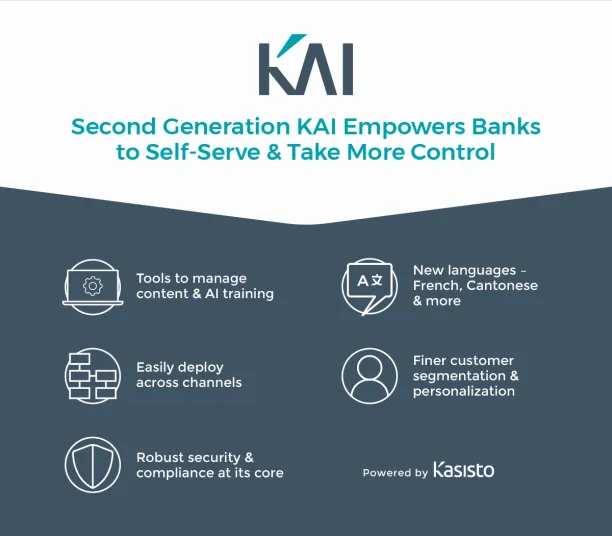
Figure 3. Kasisto KAI chatbot advertisement
30. Crypto-related chatbots
Chatbots are making crypto trading and wallet management less intimidating by providing real-time market updates, transaction help, and security alerts. They make investing in cryptocurrency more accessible through blockchain integration.
Example: Coinbase uses chatbots to help users buy, sell, and track crypto assets while offering insights on price trends and portfolio performance.30
Entertainment & media
31. News delivery
News chatbots have transformed how we consume information by delivering real-time updates, custom summaries, and interactive content based on our interests.
Example: Google’s partnership with The Associated Press to integrate up-to-date news into its AI chatbot, Gemini, enhances the immediacy and relevance of news dissemination.31
32. Run surveys and polls to collect public opinion
Through interactive surveys and polls, chatbots help media companies collect public opinions on TV shows, elections, or social movements.
Example: Companies like Netflix and Spotify employ conversational AI to gather customer preferences in real-time, which helps them with personalization and content planning.
33. Interactive content
Entertainment platforms use AI chatbots to create personalized games, surveys, and interactive quizzes that capture viewers’ attention and boost content consumption.
Example: Disney has increased fan engagement by using a chatbot on Messenger to provide trivia questions related to its well-known films.32
Human resources
34. Recruiting chatbots
Recruiting chatbots lighten HR’s workload by pre-screening applicants, answering common questions, and scheduling interviews.
Example: IBM’s Watson Assistant assists recruiters in handling large hiring volumes to cut down on recruitment time and improve the candidate experience by performing preliminary evaluations and quickly locating exceptional candidates 33
35. Onboarding chatbots
Onboarding chatbots answer new hires’ questions about workplace procedures, benefits, and company policies while providing personalized guidance.
Example: Virtual assistants can speed up new hires’ absorption into the business culture and assist them with onboarding chores, expediting the first training phase by proactively answering frequently asked questions during employee onboarding.
Productivity & scheduling
36. Schedule meetings
Chatbots take the pain out of scheduling by automatically setting up appointments, checking availability, and sending reminders, saving professionals valuable time.
Example: AI-driven chatbots have recently been incorporated into Calendly and other systems to handle complicated scheduling situations and proactively coordinate calendars.34
37. Tracking capabilities
Chatbots boost productivity by monitoring tasks, deadlines, and project progress in real-time, keeping teams organized and in sync.
Example: Users may monitor task statuses and get automated updates within team channels with Slack’s integrated chatbot processes.35 Similarly, Microsoft Teams incorporates AI-powered helpers like Workbot to monitor real-time deliverables and notify users of impending deadlines or any bottlenecks.36
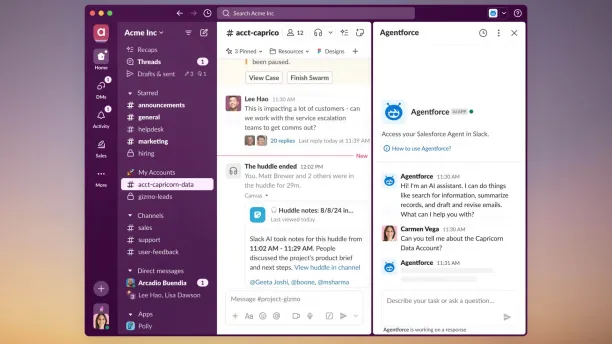
Figure 4. Slack’s chatbot interface
38. Employee etiquette training
The hospitality industry has embraced AI chatbots for staff training on customer service etiquette.
Example: Hilton Hotels has integrated advanced technologies, including artificial intelligence (AI), into its staff training programs. The company is committed to leveraging technology for workforce development by exploring how AI can enhance the experiences of both candidates and employees. This use of AI in training reflects Hilton’s progressive approach to staff development.37
39. AI-powered task prioritization
Chatbots help employees be more productive by automatically sorting tasks based on urgency, deadlines, and context. They work seamlessly with tools like Trello and Asana.
Example: Asana introduced an AI assistant that intelligently suggests task priorities, helping teams manage workloads effectively.38
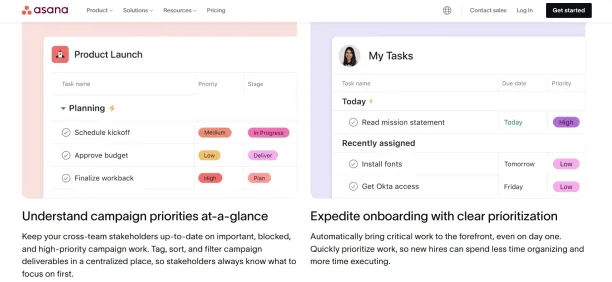
Figure 5. Asana’s chatbot advertisement
40. Employee feedback and engagement
AI chatbots help companies better understand employee experiences by conducting conversational surveys directly within collaboration platforms, making feedback collection simple and painless.
Example: Slack’s AI-powered Polly bot enables frequent, frictionless employee feedback, resulting in higher participation rates and improved workplace satisfaction.39
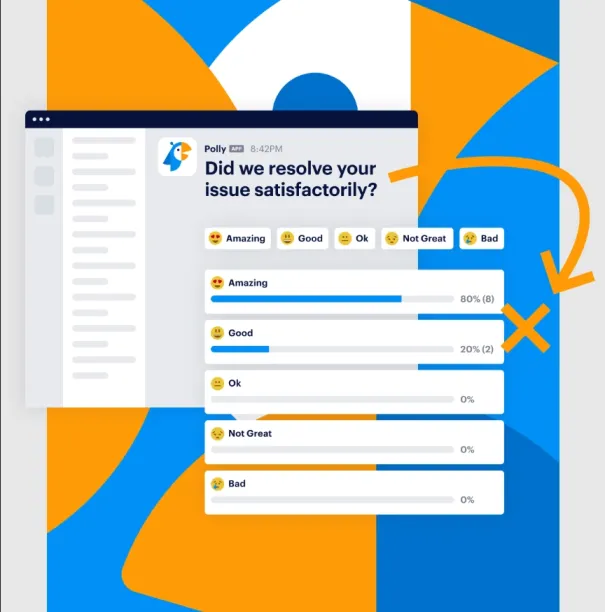
Figure 5. Slack’s Polly chatbot advertisement
Conclusion
Chatbots serve various functions, from providing 24/7 customer support and qualifying sales leads to assisting in virtual nursing, automating HR onboarding, and offering financial advice. They utilize intent recognition, context management, and smooth integration with backend systems (like CRMs and EHRs), along with human handoff procedures, to meet specific needs in each domain.
The next wave of chatbot innovation will integrate multimodal AI, combining voice, vision, and emotion detection with real-time analytics. This will enable personalized conversations, automatic A/B testing of dialogue strategies, and quick adjustments based on user behavior. With effective design and ongoing optimization, chatbots will remain vital for enhancing user experiences and driving business growth.
FAQ
What makes AI-powered chatbots effective in our customer support?
We implement AI chatbots that leverage advanced natural language processing and multiple AI models, including LLMs and generative AI. This enables our systems to understand customer inquiries and generate appropriate responses. Our chatbots effectively handle complex queries, integrate across multiple channels, and reduce the need for human agents to manage routine customer interactions.
Can we completely replace human agents with AI chatbots in our contact centers?
While our AI chatbots excel at handling repetitive inquiries and common issues, we find they work most effectively alongside our human agents. Complex customer interactions requiring advanced reasoning, nuanced understanding, or empathetic responses still benefit from human involvement. We typically implement a hybrid approach, combining chatbot applications, interactive voice response, and human agents for optimal customer experience.
How can we utilize AI chatbots in our marketing campaigns?
We use AI bots in our marketing efforts to engage potential customers through personalized content and interactive experiences. Our chatbots capture leads directly from website visitors, conduct relevant conversations, answer questions via natural language prompts, and recommend appropriate content. This enhances our lead generation, user engagement, and overall effectiveness of digital marketing campaigns across multiple channels.
What is our best approach to fine-tuning AI chatbot applications for improved performance?
We improve our chatbots through continuous monitoring and analysis of user interactions, integration of various AI models, and refinement of natural language processing systems. We regularly update chatbot knowledge bases, train AI agents with actual user data, and maintain straightforward interfaces. This development ensures our chatbots consistently provide effective tools and smooth conversational experiences for all users.
Further reading
External Links
- 1. U.S. perceived benefits of chatbots 2023| Statista. Statista
- 2. Chatbots in Call Centers – Amazon Web Services (AWS).
- 3. Domino's Home Page - Domino's Pizza, Order Pizza Online for Delivery - Dominos.com.
- 4. Contact us - IKEA US.
- 5. Business Insurance | Allstate.
- 6. AT&T Bot.
- 7. Contact us - Spotify.
- 8. Makeup, Skincare, Fragrance, Hair & Beauty Products | Sephora.
- 9. Netflix - Watch TV Shows Online, Watch Movies Online.
- 10. Der Toyota Live Chat | Kontakt | Toyota DE. Toyota Deutschland
- 11. GitHub - zillow/compliant-real-estate-chatbot: Code and experiments for the paper "A recipe for building a compliant real estate chatbot".
- 12. Contact (USA) | Chewy USA.
- 13. Uber Eats Support & Customer Service | Uber Help.
- 14. HealthJoy – Where Benefits Come to Life.
- 15. Health. Powered by Ada..
- 16. Woebot Health. Woebot Health
- 17. Calorie Tracker & BMR Calculator to Reach Your Goals | MyFitnessPal.
- 18. Contact Us | H&M UK Customer Services | H&M UK.
- 19. Amazon DE price tracker, price history, price watch, price drop alerts, and price notifications. | camelcamelcamel.com .
- 20. Payment and Order Tracking over a Chatbot. TARS
- 21. Nike Customer Service. Nike.com.
- 22. Netflix Chat.
- 23. Expedia Travel: Vacation Homes, Hotels, Car Rentals, Flights & More.
- 24. Booking.com | Official site | The best hotels, flights, car rentals & accommodations .
- 25. OpenTable – Discover & Book the Best Restaurants. OpenTable
- 26. Eventbrite - Discover the Best Local Events & Things to Do . Eventbrite
- 27. Google Assistant, your own personal Google. Google Assistant
- 28. Betterment.
- 29. Leading Conversational AI Banking Platform | KAI by Kasisto. Kasisto
- 30. Coinbase - Buy and Sell Bitcoin, Ethereum, and more with trust.
- 31. Google works with Associated Press for fresher results on Gemini app. Google
- 32. ✨Disney+ Chatbot — Danielle Loleng · Conversational Design.
- 33. IBM Watson.
- 34. 5 ways chatbots can optimize your Calendly meetings conversion | Calendly.
- 35. AI Tools for Summarizing & Answering Questions | Slack.
- 36. Workbot for Microsoft Teams | Workato Docs.
- 37. Innovative Training through VR and AI for Hotel Staff | by Manos Karagiannis | Hotel Tech | Medium. Hotel Tech
- 38. https://asana.com/uses/task-management?&utm_campaign=BRAND–EMEA–DE–EN–General&utm_source=google&utm_medium=pd_cpc_br&gad_source=1&gclid=CjwKCAjwp8–BhBREiwAj7og134OaJC8BK57FqiO3icrQEc3mqe2Ye0zmH_dQoXjQikY8PIfSHb88BoCm3UQAvD_BwE&gclsrc=aw.ds
- 39. Instant engagement for Slack.

Comments
Your email address will not be published. All fields are required.